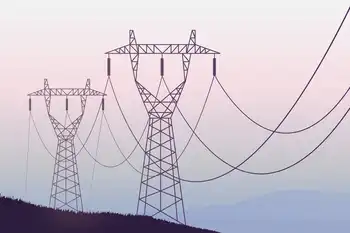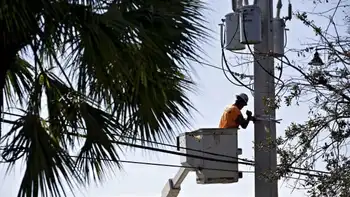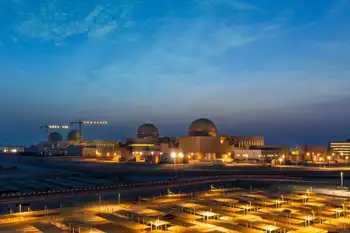Efficiency could cut energy use by 23 per cent
By New York Times
NFPA 70e Training - Arc Flash
Our customized live online or in‑person group training can be delivered to your staff at your location.

- Live Online
- 6 hours Instructor-led
- Group Training Available
An investment of $520 billion in improvements like sealing ducts and replacing inefficient appliances could produce $1.2 trillion in savings on energy bills through 2020, the study found.
The report said such a program, if carried out over the next decade, could cut the country’s projected energy use in 2020 by about 23 percent, a savings that would be “greater than the total of energy consumption of Canada,” Ken Ostrowski, a senior partner in McKinsey’s Atlanta office, said at a forum in Washington. It would also more than offset the growth in energy use that would be expected otherwise.
“The scale is vast if we can put together the means to pursue it,” Mr. Ostrowski said.
Homes account for about 35 percent of the potential efficiency gains, according to McKinsey, while the industrial sector accounts for 40 percent and the commercial sector 25 percent. The report included only efficiency improvements whose long-term savings would outweigh the initial costs. It did not consider the potential environmental benefits of cutting energy use.
The report acknowledged substantial barriers to achieving the savings, foremost among them the initial costs. The $52 billion annual investment envisioned by McKinsey is four or five times more than the nation currently spends on energy efficiency, and would have to be maintained over a decade. The economic stimulus package passed in February barely makes a dent; by McKinseyÂ’s estimate, it contains $10 billion to $15 billion in spending on energy efficiency.
Some home or business owners may not have the money to finance efficiency improvements, even if they would pay off in the long run. Other barriers include inertia (a homeowner may simply not feel like replacing an old air-conditioner); and poorly aligned incentives (a landlord who does not pay the electric bill has no economic reason to replace the old air-conditioner).
The potential gains are also spread across millions of homes and businesses, so getting widespread participation would be a challenge.
“No question, the potential is there theoretically,” said David G. Victor, an energy expert at the University of California, San Diego, noting that he had not yet seen the report’s details. “It’s really, really difficult to achieve that full potential in the real world.”
To achieve $1 trillion in savings, Mr. Victor added, would require “a lot of people and a lot of complex organizations to change their behavior.”
The McKinsey reportÂ’s recommendations include providing education and better information about the potential savings from energy efficiency, tighter building codes, stricter efficiency requirements for appliances and greater financial incentives for making efficiency improvements.
The Obama administration has been pursuing many of these avenues — for example, some energy-efficiency funding in the stimulus bill requires states to promise to strengthen their building codes. President Obama has also made stricter appliance standards a priority.
Jon Creyts, a McKinsey partner in Chicago, said that energy efficiency presented the “most compelling” way to combat climate change, as well as to achieve energy security and affordability. It is not, however, a panacea, he said.
“Energy efficiency is an important and compelling low-cost option,” Mr. Creyts said, “but there are reasons that we need to innovate and continue to develop clean sources of energy.”
Peter Lehner, executive director of the Natural Resources Defense Council, said even greater savings were possible. The McKinsey report made conservative assumptions, he noted, and it did not account for savings from changes in behavior — people turning out lights in empty rooms or turning down the thermostat in winter, for example.
Nor did the $1.2 trillion figure take account of a possible cost for greenhouse gas emissions, which could be capped under climate legislation pending in Congress, and could bring about increases in energy efficiency.
“Even if we don’t get a climate bill this year, it’s extremely conservative to think there will not be a price on carbon in the next decade,” Mr. Lehner said.
The study was partly financed by McKinsey, and by a group of co-sponsors that included the Southern Company, a utility holding company, as well as the United States Green Building Council and the Department of Energy.
A separate study by the National Research Council cited potential energy savings of 15 percent by 2020 and 30 percent by 2030 if more efficient technologies were adopted. Unlike McKinsey, the research council included transportation, acknowledging that it would be a difficult sector to transform quickly.











